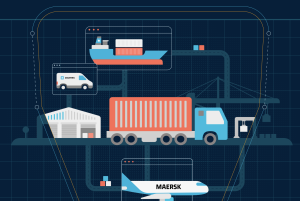 The ballooning imports against a drop in exports have seen Zimbabwe faced with liquidity challenges. In as much as importation of finished products is adding towards the bill, a closer look shows that other production-related imports are high – and many of these do have local manufacturers. Supply chain professionals can do a great deal to help reduce the amount of money leaving Zimbabwe through importation of raw materials, packaging and other auxiliary materials by developing the country’s local suppliers, says Gibson Sibanda, Secretary of the CIPS Zimbabwe branch, in this month’s SmartProcurement.
The ballooning imports against a drop in exports have seen Zimbabwe faced with liquidity challenges. In as much as importation of finished products is adding towards the bill, a closer look shows that other production-related imports are high – and many of these do have local manufacturers. Supply chain professionals can do a great deal to help reduce the amount of money leaving Zimbabwe through importation of raw materials, packaging and other auxiliary materials by developing the country’s local suppliers, says Gibson Sibanda, Secretary of the CIPS Zimbabwe branch, in this month’s SmartProcurement.
Importing raw materials that are locally available is owed to suppliers failing to meet procuring entities’ requirements, be it technical, production capacity, quality or financial. Once this happens, procurement practitioners turn to the global market for sourcing.
From an African perspective, most organisations that embrace supplier development in their supply chain management strategies only do so if they have import challenges, rather than recognising supplier development as a key function of supply chain management strategy, says Sibanda.
In its simplest form supplier development is any long-term act or combined efforts undertaken by a procuring organisation with its suppliers to improve suppliers’ performance and/or capabilities to satisfy the current and future requirements of the procuring organisation. Supply chain management theory states that success of an organisation does not solely depend on its own activities; hence members of the supply chain network play an important role in influencing the performance of the local firm. Therefore, supply chain members should co-ordinate and collaborate well to create supply chain surplus which the entire network feeds on.
Supplier development can take several forms ranging from direct or indirect, reactive or proactive, structured or unstructured dimensions, etc.
Direct forms involve assisting the supplier either financially or through human capital needs. A procuring organisation engages with a supplier based on the supplier’s evaluation results, i.e. under-performance against set criteria will trigger the procuring organisation to ‘chip in’ to ensure the supplier meets its current or even future needs.
“This type of supplier development practice is taxing, time consuming and costly, but the benefits are awesome,” says Sibanda.
Indirect supplier development is mostly applied by organisations that have set up constant communication of supplier performance against set deliverables at agreed times in a year, which is prevalent in ISO-certified organisations. There are not many benefits to the procuring organisations, especially if the supplier is falling short of capacity and financial capabilities, notes Sibanda.
The East, particularly the motor industry led by Toyota, adopted supplier development practices as early as 1940s. Toyota joined supplier associations to assist a number of sub-contractors to improve their productivity. Toyota’s objective was aimed at improving quality, supply chain and relationship management issues. After realising the gains made by Toyota and other automotive firms, the West as late as the 1990s adopted supplier development practices.
Come 2000s, the motor industry as a whole pressed ahead with supplier development policies and practices and it became part of their popular, powerful and strategic tool to enhance supply chain performance. As benefits of supplier development continued to unfold, many global organisations came on board: HP, Marks and Spencer, 3M, Motorola, Boeing and McDonalds.
A way forward for Zimbabwe
In order to curb the ballooning import bill, the Zimbabwe government, through relevant departments in consultation and collaboration with relevant authorities, supply chain practitioners and industrial leaders, can adopt one or more of the following supply chain management interventions. These should encourage, enhance and promote local supplier development as a means of reducing the amounts of raw material, packaging and auxiliary material imports.
a. Local content procurement policy – In every business setup, a certain percentage of raw materials to be sourced locally. This should apply to all industry sectors, be it agriculture extraction, manufacturing, processing, retail and service industry.
b. Tax rebates on supplier development – Undertaking supplier development is a costly and time-consuming exercise, therefore, relevant authorities should come up with policies that are mutually beneficial. This could be done by structuring tax rebates that promote supplier development and are aligned with the amount of resources a firm puts into developing local firms.
c. Partnership policies – Provide policies that encourage partnership. Form supplier associations within a specific industrial cluster for sharing information on innovation, continuous improvement, new product development and best practices.
Empirical evidence shows that though supplier development is not intensively adopted, especially in developing countries, those that make it part of their strategic tools are performing better than those that do not. While the practice is not evident in Zimbabwe (some of the reasons will be addressed in future SmartProcurement articles), pressure from the relevant authorities in the form of policies and incentives to adopt, implement and promote this tried-and-tested strategy will help to reduce the widely hated, ever-increasing import bill.
To engage with Gibson Sibanda on this topic email him on gibbiesibanda@gmail.com


























